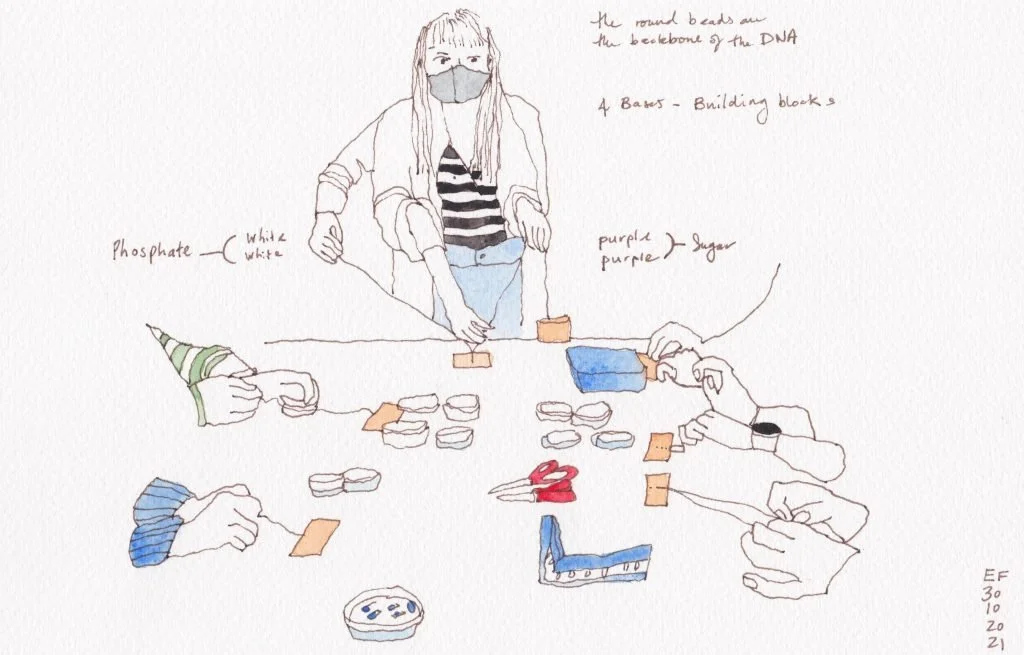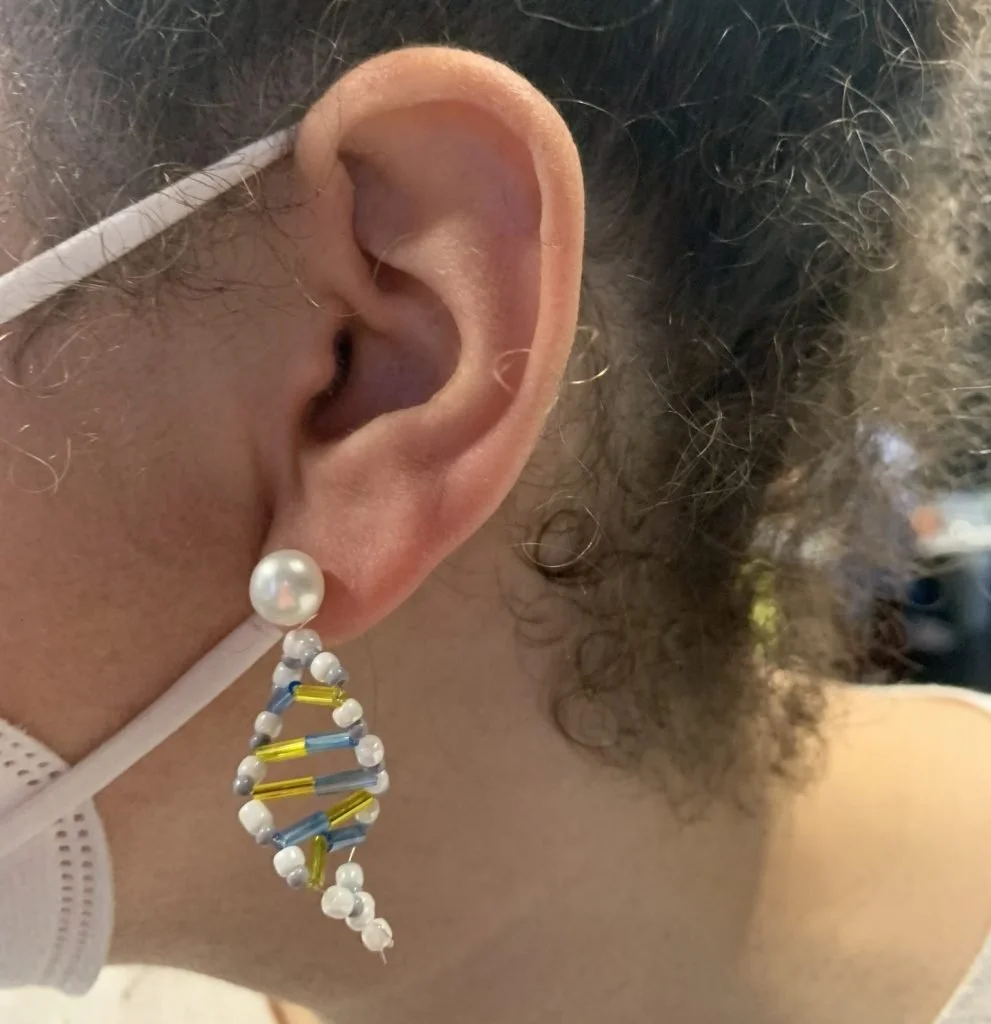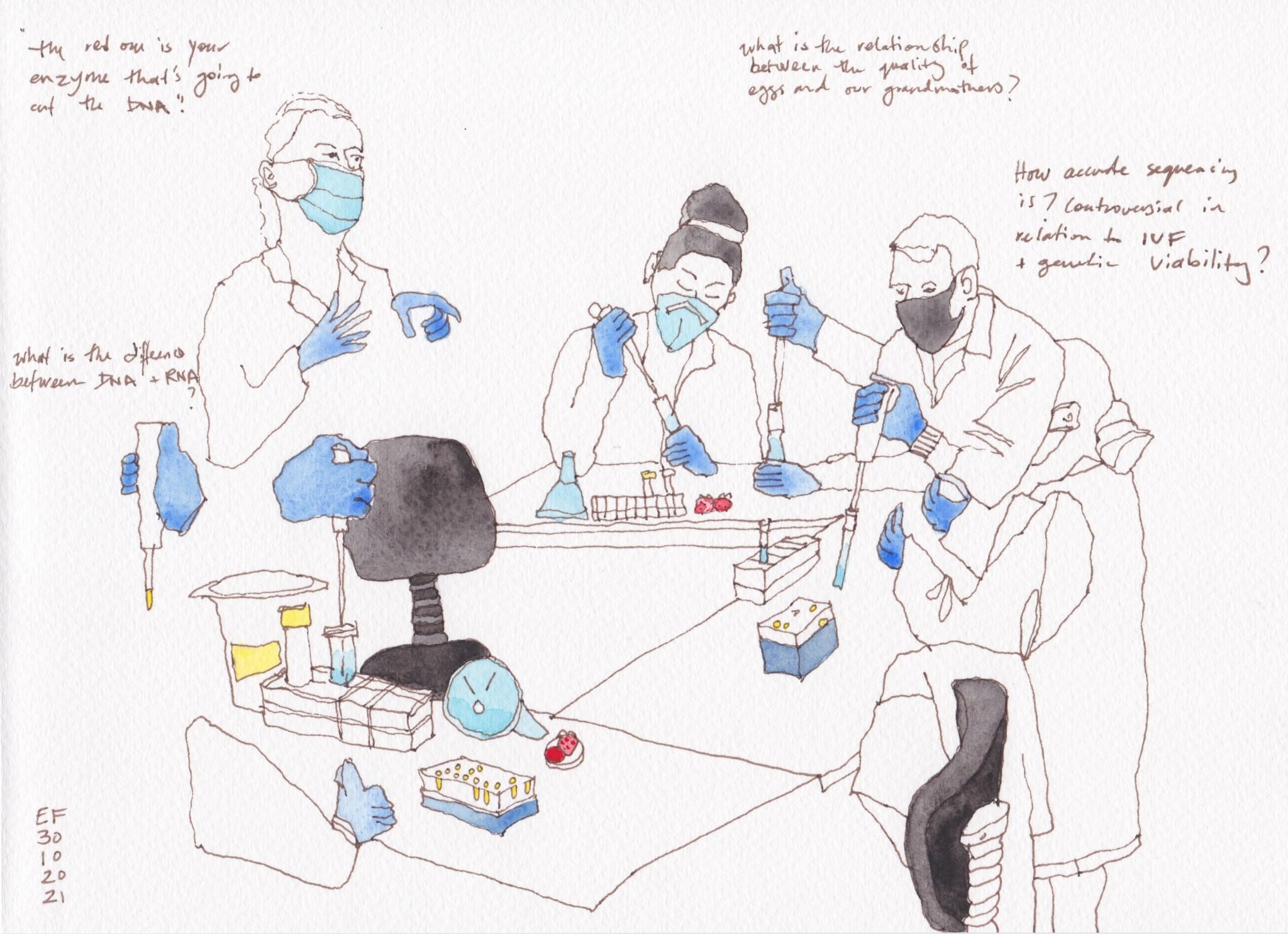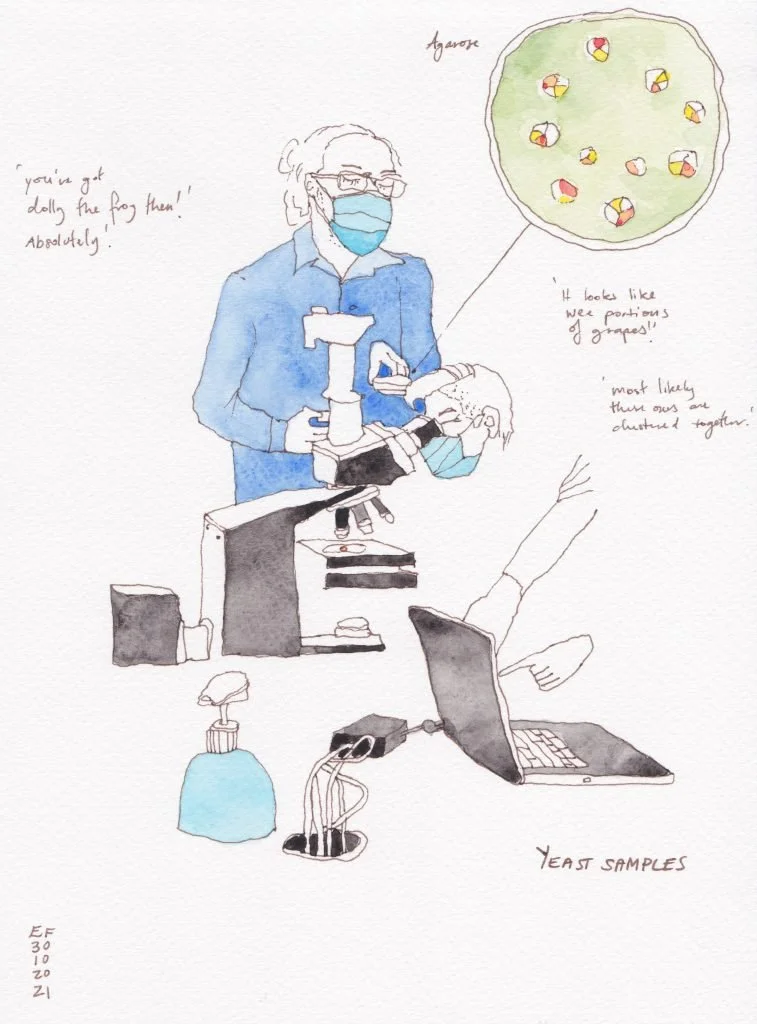A day in the life of a fertility researcher: Finally back in ASCUS Lab!
Chromosomes under the fluorescent microscope. Image by Bettina Mihalas
After what seemed like an eternity of uncertainty with the ever-changing government guidelines and social distancing rules, we were finally able to host the first in-person hands-on workshop in almost 2 years! Partnering with the Wellcome Trust Centre for Cell Biology, and the amazingly talented artist, Emily Fong who captured the afternoon’s events, ASCUS Art & Science hosted a hands-on workshop led by fertility researchers, Gerard Pieper and Bettina Mihalas from the Adèle Marston lab at the University of Edinburgh. Looking to gain insight into what goes on behind the scenes in fertility research labs, and the methods these scientists use day-to-day, five couples interested in fertility treatment and the research around this topic came along to ASCUS Lab to explore the beautiful, but sometimes troublesome molecule: DNA.
DNA is all around us and although we have all heard of this magic molecule, not many of us have seen what a mass of DNA looks like in real life outside of a cell so, participants were tasked to extract DNA from strawberries to find out for themselves. Exclamations of both disgust and delight filled the lab with descriptions of what DNA looks like ranging from “candy floss” to “snot”. This activity opened up great conversations about DNA damage and the possibility of some damage being hereditary.
Through jewellery-making, the appearance of DNA was explored further, this time zooming into what the shimmering white candy-floss-like substance would look like under high magnification, on a molecular level. Participants created their own beaded DNA molecules that represented the double helix DNA structure discovered in 1953. Participants learnt about the different nucleotides, or DNA building blocks, whose sequence determines our genetic code and got a sense of how intricate the molecular structure of DNA is compared to what can be seen with the naked eye!!
One of the ideas behind this workshop was to provide a space for people undergoing fertility treatment to learn more about how research in this field is conducted and try their hand at some of the scientific techniques used by fertility researchers on a day to day basis. With participants being exposed to words like “restriction enzymes”, “electrophoresis”, “fluorescent marker” and “agarose gel” naturally, confused looks were passed around at the beginning of the session, but by the end, participants were using these words with understanding in fluid conversation!
We chatted about misconceptions relating to genetic modification being used in fertility research, as it is not uncommon for the term “genetic modification” to lead to mis-understanding and dis-comfort. In the context of fertility research, genetic modification refers to cutting DNA extracted from animal egg cells and inserting a gene that glows when exposed to particular light waves into the cut DNA.
By adding a glowing gene, scientists can monitor how cells divide, and it can also give an indication of the function of certain genes that may be involved in causing fertility problems. Without techniques like this, fertility researchers would have a really hard time trying to solve problems that are based in teeny tiny almost-invisible molecules. Participants performed part of this DNA cutting procedure themselves and realised the immense skill that researchers need in order to conduct these types of experiments, with a unanimous agreement that accurate pipetting is really difficult!
Looking at oocytes (egg cells) from frogs and mice under the ASCUS Lab fluorescent microscope, participants could see how similar these cells are to human egg cells, and how useful genetically modifying DNA can be in research.
The afternoon’s activities sparked great discussions about DNA, science, the challenges fertility researchers face in their work, and some of the challenges participants have experienced in their journey through fertility treatment. All involved walked away feeling enlightened after an informative afternoon; researchers, by some of the questions they were asked by participants, and participants seeing a little glimpse of how fertility research is conducted. We were thrilled to host people in our lab again doing a hands-on workshop, and can’t wait until the next one!
All illustrations courtesy of artist, Emily Fong. https://emilyfongstudio.com/





